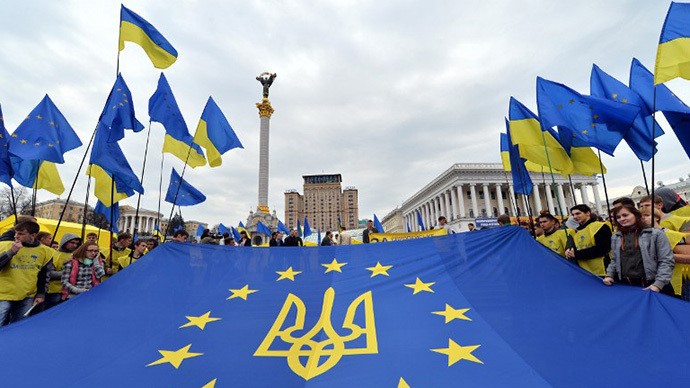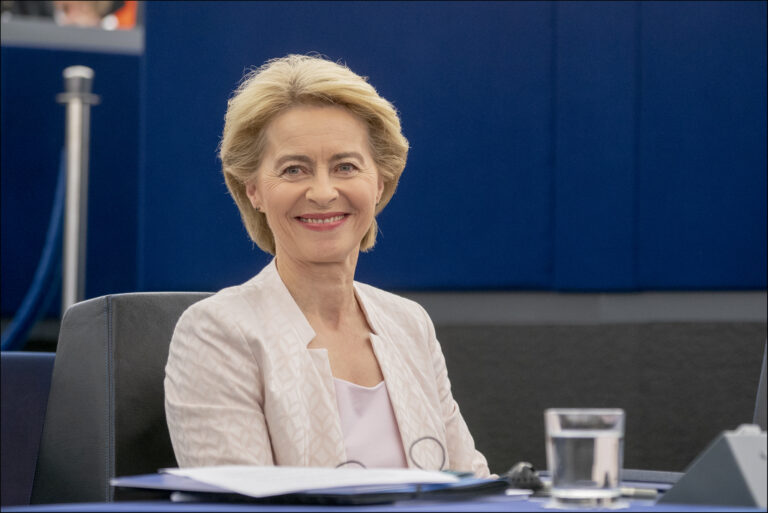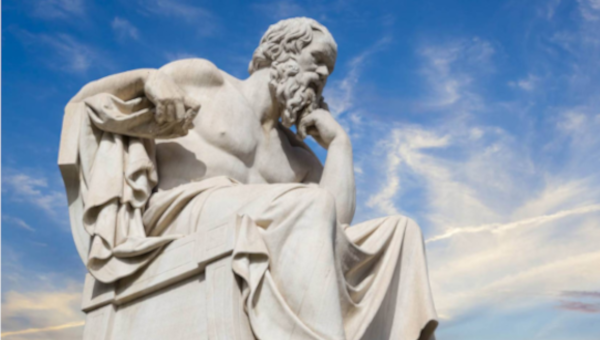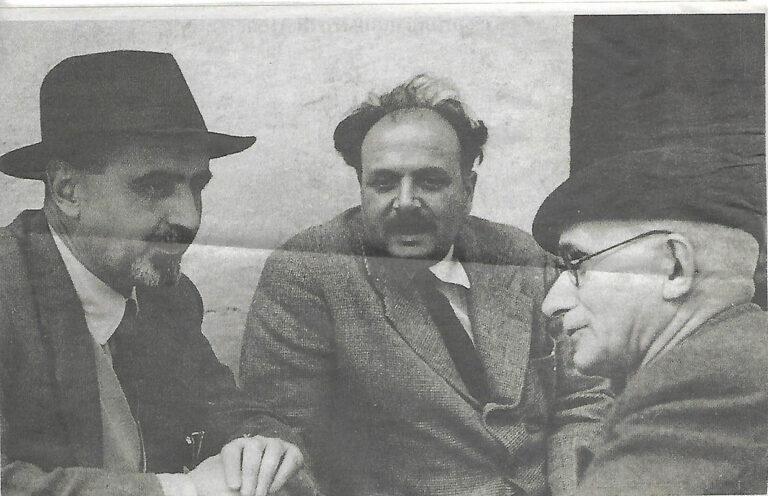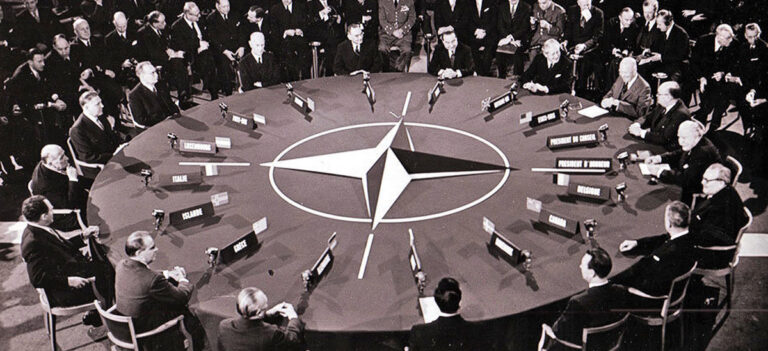
A three-part common framework to reflect on the future of NATO
The crises in Ukraine (2014) and Belarus (2020) show that the problem of security and peace in Europe needs a new solution, going beyond the old constraints of the Cold War. The three short chapters presented here draw on Mikhail Gorbachev’s 1987 proposal for a Common European Home, a kind of “European Reykjavik”. Of course, today’s problems are different, but the main content of the original proposal should be reconsidered, given that the European Union is working towards creating a European defence force, and international relations between the US, Russia and China are deteriorating. The President of the European Commission, Ursula von der Leyen, in the State of the Union Address (Sept. 16th, 2020) said: “We are ready to build a New Transatlantic Agenda”.
We hope that our proposal helps the Atlantic leaders find a path towards a more peaceful world.
***************
1. From the Atlantic Pact to the Common European Home
NATO is a working, regional, collective security organization. The United Nations is a universal, collective security organization, but, because of the veto and great power disunity, it does not work well in providing the promised international peace and security. The North Atlantic Treaty and its military organization NATO was founded in 1949, following the Communist Party coup in Czechoslovakia, as a defensive alliance of Western democracies to meet further aggressive advances of the Soviet Union. Its Article 5 provides that, in case of armed attack against any member, all pledge to come to its assistance, including by use of armed force. Art. 4 provides for consultations. Art. 2 requires members to protect free institutions (democracy) and to encourage an open international trading regime (capitalism in practice).
When it was founded, the first secretary general, Lord Ismay, explained in a famous remark, “The purpose of NATO is to keep the Russians out, the Americans in, and the Germans down.” When the Cold War ended in 1989, NATO was not disbanded, as Realist theorists Kenneth Waltz and John Mearsheimer thought it would, since it had lost an enemy, but it was preserved as a regional collective security organization to keep the peace in Europe. It has since grown to 30 members, including all of the former (Communist) Warsaw pact states. Since 1994, it has included a friendly accession process, the Partnership for Peace (PfP), which at one point included 41 other states, including Russia. The PfP has been at the heart of recent controversy.
After the last major expansion of NATO in 2004, which admitted six Eastern European states and the three Baltic ones, Russia began effective resistance to further expansion, as of Georgia and Ukraine. They accepted Membership Action Plans at the NATO Bucharest summit in 2008, which was the last straw. Moldova and Belarus were next threatened. Vladimir Putin, who came to power in 2000, saw NATO expansion as hostile to Russia in a pattern of American claims to “victory” in the Cold War, unilateral military expansion in the Middle East, and hegemonic promotion of economic globalisation. In 2005, he warned his country in terms of high geopolitics: “First and foremost it is worth acknowledging that the demise of the Soviet Union was the greatest geopolitical catastrophe of the century.” He plainly set out to restore some semblance of the old Union. He suppressed Georgia in a civil war, began the modernization of the Russian armed forces, and stopped Ukraine by the annexation of Crimea (with its naval port at Sevastopol) and by covert war in the eastern provinces of the Donbas, scenes of the greatest tank battles of World War II. The upshot is that the transition to a liberal security area in Eastern Europe has stalled, the PfP is no longer seen as a step toward membership in NATO, and Russia is resurgent. NATO itself is at a crossroads.
The West, of course, has seen the rectification of borders by armed force as aggression, and has imposed severe sanctions. But Putin justified himself with sovereign right in a speech of 18 March 2014, saying that taking back Crimea was popular in the Russian-settled parts of eastern Ukraine and was no different from the West’s seizure of Kosovo from Serbia in 1999. Curiously, Mikhail Gorbachev, in his book, The New Russia (2016), saw the action in Crimea as defensive in the same way:
In the West, by which I mean the ruling elites of the United States and the countries of NATO, everything was blamed on Russia. Everywhere they saw the “long arm of Moscow” but this conflict was not Russia’s making. It has its roots within Ukraine itself.
I see the main, deep cause of the Ukrainian events in the disruption of Perestroika and the mindless, reckless “disbanding” of the USSR.… I proposed [in the spirit of the Common European Home] negotiations with Ukraine on an economic union, a common defence and foreign policy. In the course of such negotiations, we could have resolved all the thorny questions, like the status of Sevastopol and Crimea, and the Black Sea Fleet.…
The Ukrainian crisis has provoked a serious and dangerous deterioration of relations between Russia and the West.… Economic sanctions against Russia have been introduced, cooperation in many areas greatly restricted, and decisions are being taken to strengthen the military presence of NATO in countries adjacent to Russia. All this is very reminiscent of the Cold War era (pp. 377-79).
This hostile situation is the context for statesmanship of a high order in Eastern Europe. The leadership could come from the countries that recently have been trying to develop a more understanding and respectful attitude toward Russia in order to end the sanctions and establish a system of common security: Italy, Hungary, Greece, Slovakia, Crete, and most notably, France. An opportunity presents itself in the rather strange decline of the United States of America. The “wars for freedom,” nation-building, and expansion of democracy, particularly in Afghanistan and Iraq, which have been foreign policy since 2002, following the terrorist attacks on the World Trade Towers and the Pentagon on 9/11, have ended in weariness and frustration, as recounted by historian Andrew Bacevich, as in The Age of Illusions: How America Squandered Its Cold War Victory (2020).
Bacevich writes from the perspective of a retired Army colonel who, like all soldiers, has seen the realities of the application of high policy on the ground. The Persian Gulf War of 1990-91, because it was mandated by the U.N. Security Council and drew coalition partners from many Arab and Muslim states, successfully halted Iraqi aggression. But not so the wars in Bosnia, Kosovo, Afghanistan, and Iraq after 2003, fought alone, with Britain, or with reluctant NATO partners. When Trump was elected president, he asked, “Why are we fighting other peoples’ wars?” Despite his occasional belligerence (as toward North Korea), Trump actually has tried to stay out of wars, even to dismiss the usual American suspicion of Russia. He attacks the liberal elite among policy makers and diplomats as part of the “swamp” he has promised to drain. He has asked if NATO is not “obsolete.” His objection seems to be mostly to members’ failed burden-sharing, while overlooking NATO’s continuing value in securing the peace in Europe.
Hence, there seems to be an opening for new European leadership. America under Trump is withdrawing into isolationism and protectionism. Britain is continuing its decline from the days of the British Empire into Brexit. That leaves the bigger players in NATO: Poland, most fearful of Russian return; Germany, cautious after the perilous process of reunification; and France, most secure in the EU and beginning, under President Macron, to exert leadership in NATO.
Where is Putin taking Russia? He is not preparing for World War III, as used to be feared from the old Soviet Union. He is on record at aiming to reestablish a wider federation of Eurasian states, in order to restore Russia as a great power on a par with the Group of 7. This might be done by persuasion, as in Gorbachev’s draft union treaty of 1991. The worst process would be use of force and civil war, as in 1917-24. Putin has shown the way with the establishment of his Eurasian Customs Union, which is a value-neutral, collective security and nonaggression pact (no democracy and human rights as in the Helsinki accords). It seems to be envisaged as an equal contender to the European Union. He speaks of it as a community “from Vancouver to Vladivostok.” Gorbachev’s vision of a Common European Home would be more modestly confined to historic Europe, understood broadly to include Peter the Great’s Russia.
The international situation is very perilous. The disarmament treaties that ended the Cold War have been abandoned or are moribund: INF, CFE, START-3, CTB, ABM.… The international organizations established after WWII to inaugurate a liberal world order, starting with the United Nations and its specialized agencies, are increasingly neglected. Global problems beyond the capacity of sovereign states to solve alone — like global warming, destruction of biodiversity, cutting down the rainforests, neglect of human rights, failed states, and lack of regulation of the hyperconnented global economy — are not being confronted by our political establishments.
In the case of Eastern Europe, the OSCE is too weak and the EU too slow to build the necessary regional security. NATO is all that is left. A settlement there would seem to mean gradual acceptance of the return of Crimea to Russia, the protection of ethnic Russians in the Donblas, and recognition of Russia’s security interests in its “near abroad.” If respect for Russia could be reestablished, Putin might abandon some of his nastier assertions of power, such as his party United Russia’s or the GRU’s poisoning of democratic opponent Aleksei Navalny. What we wish to avoid is Putin’s return to a coercive Eurasian union reminiscent of the USSR arrayed against NATO in a new Cold War. Putin must understand, if he wants to restore Western friendliness, that fair elections are the standard for demokratizatsia, as Gorbachev often says.
The West’s proper conduct toward Russia, I think, is not to prepare for a new Cold War. The next step, if we can abandon labelling Russia an aggressor and cease the punitive sanctions, is to invite Russia into NATO — transformed into a Eurasian collective security system stretching to China. The transformation of NATO into an inclusive, working collective security system in Eurasia is where new leadership is needed. It is still possible that there will be a revival of U.S. international leadership if Trump is returned to civilian life in the November 2020 elections.
And looming beyond is China.
***
2. Towards a new world order: European defence and the “Common European Home”
Raymond Aron, at one time, pointed out that with the nuclear weapon, the statement of von Clausewitz, according to which the war is the policy continued by other means, was no longer true. He observed that «the threat of war, including thermonuclear war, belongs to the normal climate of international relations, but war itself would in itself be mostly contrary to rationality, putting an end to politics instead of continuing it». Michael Gorbachev, when he said that, with the «entrance into the nuclear age, humanity has lost its immortality», took an extra step. This is the profound meaning of the epochal turning point that was made with the military use of nuclear energy. This is why it is necessary to reverse the dangerous trend that the failure to renew the expiring treaties on the reduction or limitation of nuclear weapons, risks setting in motion, bringing the European continent back thirty years and, with the transition from bipolarism to the most insecure multipolarism, the whole world.
The way forward, in order to try to control the growing insecurity, has been indicated by France, the country which, for historical reasons and tradition, is probably the most sensitive to changes in the balance of power in Europe and in the world. French President Emmanuel Macron, in his address to the French ambassadors at the end of August 2019, and in his subsequent address to the Parliamentary Assembly of the Council of Europe, said, respectively, that «we need to build a new architecture of trust and security in Europe, because the European continent will never be stable, will never be secure, if we do not pacify and clarify our relations with Russia» and that: «We have forged here on the scale of a continent and despite all the headwinds, a common architecture in the name of the great European brotherhood that Victor Hugo dreamed of, with the will to build the common European home, evoked by Mikhail Gorbachev before this assembly in 1989». Macron then recovered Gorbachev’s proposal for a “Common European Home” and the Mitterrand’s proposal for a European confederation that includes Russia too.
The Common European Home, proposed by Gorbachev in July 1989 and that of Mitterrand for a European confederation, advanced at the end of the same year, had, among others, the following objectives: collective safety and maximum disarmament (nuclear, chemical and conventional); peaceful resolution of conflicts; and economic and trade cooperation. As we know, these proposals were not implemented, because of the American but also European responsibility, at the time which has not yet — as at present — a foreign policy extended to security and defence.
Macron has in fact realized what could be the way forward for a constructive policy in the field of security with Russia, but it will be necessary to broaden the framework of reference, well aware that we are moving on a field still largely uncertain and where we will need deep imagination and reflection in order to find viable solutions, even if difficult. Below, are only a few ideas that take into account the crisis that the Atlantic Alliance is going through and its military organization, NATO.
From an institutional point of view, we are not starting from scratch and, once again, President Macron has indicated the direction that can be taken. As already mentioned before, speaking during the ceremony for the 70th anniversary of the foundation of the Council of Europe (CoE), he identified in the latter the institution through which the relationship with Russia can be consolidated. The CoE is an international organisation, established in 1949, whose objective is to defend human rights, democracy and the rule of law in Europe; and it has a Parliamentary Assembly of which Russia is also a member, while the United States and Canada are part of it as observers. It can therefore be the starting point for starting a cooperative relationship with Russia. However, it is not a sufficient instrument, because security policy is not one of its aims.
It will therefore be necessary to activate another body, the Organisation for Security and Cooperation in Europe (OSCE), which, among its aims, has a security policy on the entire Eurasian continent and invites to take part, in addition to the member countries of the Council, the United States, Canada and the Euro-Asian republics. The OSCE, however, is limited by being a sui generis body, as the USA has always refused to make it the subject of a treaty.
In order to strengthen its role, it will be necessary to consolidate it by means of a treaty, in order to provide it with a minimum of formal common institutions: since the tasks of the OSCE and the CoE in some way overlap and in another way are complementary, the way forward could be to unify them, in order to make the OSCE the subject of a treaty. This last point, which is particularly important for relations with the United States, cannot be overemphasized. Indeed, the US has never had the experience of sharing common institutions with other countries, such as a supranational parliamentary assembly.
The policy of US involvement must not only be pursued and strengthened: in order to consolidate the continent’s security, it will also require that the Atlantic Alliance becomes, in the future, part of the institution that will be created by the amalgamation of the OSCE and the CoE. In the meantime, it will be necessary to investigate through which policy the new institution could start, albeit gradually, a collaborative relationship that is in the interests of the EU and Russia.
Once again, it is the speech of Macron to the French ambassadors to indicate the way, when it has observed that the Russian political-economic system is weak («this great power which invests a lot on its armaments, which makes us so afraid, has the gross domestic product of Spain, has a declining demography and an aging country, and a growing political tension»).This observation seems to explain the meaning of the intervention of the Russian Ambassador in Brussels, Vladimir Chizhov, who, during a conference on foreign policy, organized by the Körber Stiftung in Berlin, in November 2018, proposed the establishment of a “economic zone” between the EU and the Euro-Asian Customs Union. This perspective was recently (2020) relaunched by the Russian Foreign Minister, Sergei Lavrov, during an interview with an Italian newspaper.
The content of this economic area, which should be implemented, has not been specified, but the proposal should be taken seriously. It goes without saying that progress in this area will have to be developed in the light of Macron’s warning («moving forward on this path, once again without naivety»), and thus progress only in parallel with progress in the field of security. It would only remain to emphasize that the Euro-Russian reconciliation would be equivalent, for the Euro-Asian continent, to what the Franco-German reconciliation represented for Europe: the pacification of the entire Euro-Asian continent.
The crucial point, however, is yet another, because the objective of stable continental security cannot be based on traditional treaties or alliances, but innovative solutions will have to be found. A contribution in this direction could come from the EU itself. The latter consists of historically consolidated national States which will hardly give up what is one of the symbols, if not the main symbol, of sovereignty, namely the armed forces. One possible solution to enable the EU to advance towards the establishment of a European defence and, at the same time, to maintain the national armed forces, is the American defence model that the Australian constitutionalist, Kenneth Wheare, called the “dual army” which for a long time characterized the American military structure. Wheare, in fact, pointed out that the American federation is the only one to have adopted a defense system based on a small federal army alongside State militias (now the National Guard). This system lasted, essentially, until 1916, on the eve of their entry into World War I, when the US began to reform its defense system, strengthening the federal level.
The EU, if it wants to make progress towards a federal defence system, could follow the same path, providing the EU with a minimum military structure to conduct peace-keeping and peace-enforcing operations outside its borders, let NATO continue to ensure the defence of the European continent. This type of defence would come close to Gorbachev’s idea of a “defensive defence”, as the EU military apparatus would be based on a minimal structure at the federal level alongside the national armed forces whose tasks would be, in fact, mainly oriented to territorial defence.
***
3. A Peaceful Cooperation Area from Vancouver to Vladivostok. A Proposal
According to various political pundits, the European Union (EU) is not an international power: it is viewed as having a limited influence on peace and war, free trade and protectionism, with the main decisions taken outside Europe.
This common point of view is not correct. While it is true that the European Union is not a military power, Europe is the continent in which the interests of the USA and Russia collide, and the EU has the responsibility, and the power, to bring about a radical change. The US and Russia are stockpiling nuclear weapons and forcing people to choose between these two hegemonic areas. The Ukraine and Belarus crises are a case in point. Both countries are members of the Eastern Partnership (EaP), an economic cooperation pact proposed by the EU in 2009, and both also belong to the Eurasian Economic Union (EEU), an economic cooperation pact proposed by Russia in 2010, which in 2011 became the Eurasian Customs Union (ECU). As the EU member states in Central Europe also belong to NATO, the dilemma of these two countries is that they are crucial to both Russian security and European security. They cannot be independent.
The reason for this disconcerting arrangement dates back to the end of the Cold War and German unification. After the successful Reykjavik deal (1986) with Reagan for nuclear disarmament, in 1987, Mikhail Gorbachev proposed in Prague and Warsaw a “kind of European Reykjavik” to complete the process of disarmament between the two superpowers. Gorbachev viewed the “Common European Home”, as a kind of union among European countries, USSR included, to promote security, peace and economic prosperity. Later on, when the question of German reunification was on the table in 1990, he asked Chancellor Kohl to ensure: “the non-extension of NATO military structure onto East German territory”. The dissolution of the USSR generated a new, completely different scenario. Many central European countries, former members of the Warsaw Pact, requested to join the EU and NATO, meaning that its eastern borders now reached up to the area viewed by Russia as vital for its security.
NATO is a military alliance that was created to contain the expansion of Soviet Union in Europe. But today there is a different issue at stake. Not only has NATO expanded eastward (originally it had 12 members, now it has 30), but it is also making inroads outside of Europe: by “contact countries” including Australia, New Zealand, Japan and South Korea, with the aim of containing China. Lastly, since 1999 it has intervened in Kosovo, Afghanistan, Iraq, Libya and Syria. Its Secretary General, Jan Stoltenberg, proposes turning it into a global alliance. So what does the future hold for the military organisation created to contain the USSR?
In order to answer this question we have to consider three hurdles. The first is the global trend towards increasing conflicts among great powers, mainly the USA, Russia and China. The Trump administration showed that the US government could refuse to accept the multilateral rules established after the end of World War II. The USA is a declining superpower, which is unwilling to relinquish its leading role in the world (“Make America Great Again”), and is interested in forging bilateral deals with other countries in which it can prevail; China is an emerging power, less powerful in military terms than the USA, but its equal technologically and economically; Russia boasts enormous military and nuclear power inherited from the USSR. These three major powers share a common ideology: nationalism. A scenario of increasing international disorder is the consequence of conflicts among them. For instance, India is following the same nationalist approach as China to international relations in Asia and the Middle East. Peace is impossible due to the conflicting interests of the major powers.
The second concern is the NATO policy of eastward expansion, and Russia’s reaction to this. In 1994, the European countries asked NATO to adopt an inclusive approach towards Russia. At the time Russia’s economy was in crisis and the democratic regime was under siege by the Communist party and the ultra-nationalist party. NATO proposed the Partnership for Peace (PfP): a forum to discuss issues of cooperation, which would include Russia as a non-member country. But there was a clear difficulty. The NATO policy of enlargement eastward was viewed by Russia’s government as a threat to the security of Russia. An American opponent of expansion, George Kennan, the father of containment policy, said that pushing ahead with expansion: “would inflame the nationalistic, anti-Western, and militaristic tendencies in Russian opinion, … have an adverse effect on the development of Russian democracy, and restore the atmosphere of the Cold War to East–West relations” (Menon R., Ruger W., “NATO enlargement and US grand strategy”, International Politics, 2020: 374). This view was based on a profound knowledge of Russia’s history and people. Nonetheless, some member of the former Warsaw Pact asked for NATO’s protection and President Clinton continued to push for enlargement. Russia’s President Yeltsin, told President Clinton that Russia would regard expansion “as a sort of neo-isolation of our country in diametric opposition to its natural admission into the Euro-Atlantic space…. We have a different approach, one that leads to a pan-European security system”. But Clinton refused to acknowledge the Russian stance. When Yeltsin requested for the Baltic states not to be incorporated into NATO, Clinton’s answer was “No, I will not make that commitment…. All you are doing is moving the line of the divide between East and West…farther to the east” (Menon, Ruger, ibid., 382). The EU was not able to provide military security for its members and Clinton’s desire for hegemony caused him to make an historical error: enlarging NATO without the agreement of Russia’s government.
This short summary of the history of NATO enlargement shows how it is now impossible to make progress in Europe towards a peaceful agreement between NATO member countries and Russia, without admitting Russia as a full member of the club, with the same duties and rights as all the other members (US included).
The third hurdle is the EU’s defence policy. According to the Maastricht Treaty (1992), the EU was to have a European defence force. But no serious action was taken to fulfill this. As a result, the European countries that were former members of the Warsaw Pact asked to join NATO as soon as possible. The EU’s ineptitude is one of the causes of the current controversies and protests in Europe. So will the EU equip itself with its own defence force? The above chapter (No 2) provides some answers, including in terms of its structure. But the big question is: how much money and personnel should be allocated to an EU defence force? Will the EU become a great power or will it remain forever dependent on US protection? EU defence should not need to have a huge budget (within NATO or outside NATO), if we consider that Russia’s total military expenditure is only a little higher than France’s. There is also another aspect to take into account: the difference in budget required in a scenario in which two major powers, Russia and the US, two rival great powers, are stockpiling nuclear armaments, increasing the risk of war, and alternatively, in a continent in which all countries have entered into a security pact for peaceful cooperation, a “kind of European Reykjavik”, as Gorbachev proposed.
Here, I will try to show that this second scenario is possible. We do not need a revolution to resolve the European logjam of conflicts, interests and ambitions, just the full implementation of the NATO statute. Article 2 states: “The Parties will contribute toward the further development of peaceful and friendly international relations by strengthening their free institutions, by bringing about a better understanding of the principles upon which these institutions are founded, and by promoting conditions of stability and well-being. They will seek to eliminate conflict in their international economic policies and will encourage economic collaboration between any or all of them”. Russia should be invited to join the club, as part of a plan to extend NATO’s mission, at present mainly military in nature, in order to create an area of peaceful economic cooperation from Vancouver to Vladivostok. This can be achieved by forging agreements such as the European Economic Area (EEA), which includes the EU countries, Iceland, Liechtenstein and Norway, or along the lines of the Swiss agreement with the EU: Switzerland is not a member of the EEA, but it is part of the single European market. Of course, I am aware that these models cannot be adopted as they are today, because the US, Canada, Russia, Ukraine, Belarus and the other members of the Eurasian Customs Union will certainly demand changes. Nevertheless, the core of the proposal is clear: it would be a new Treaty implementing the four freedoms which were the foundation stone of European integration: freedom of movement of goods, people, services and capital. Of course, the New Atlantic Treaty should not be simply a replica of the EU: the most important goal is to start a process to abolish national borders, in so far as they divide people and produce conflicts among national governments.
The reform of NATO proposed here will not only change the international relationships between states from Vancouver to Vladivostok, but will change the entire landscape of international relations, especially with China, showing that the path towards peaceful, prosperous coexistence is not just a dream.
